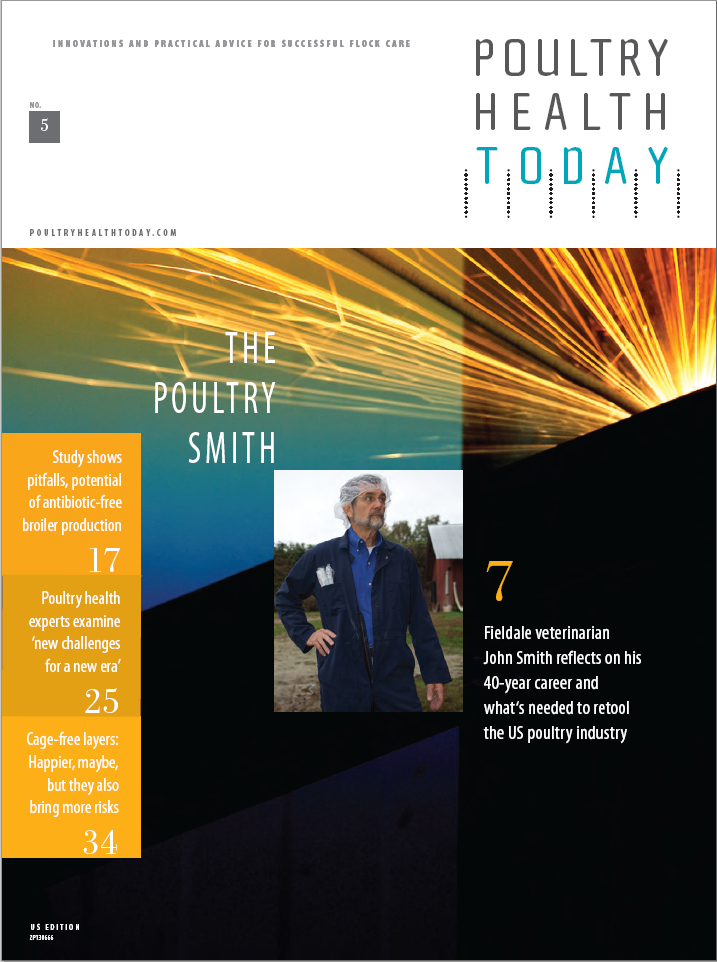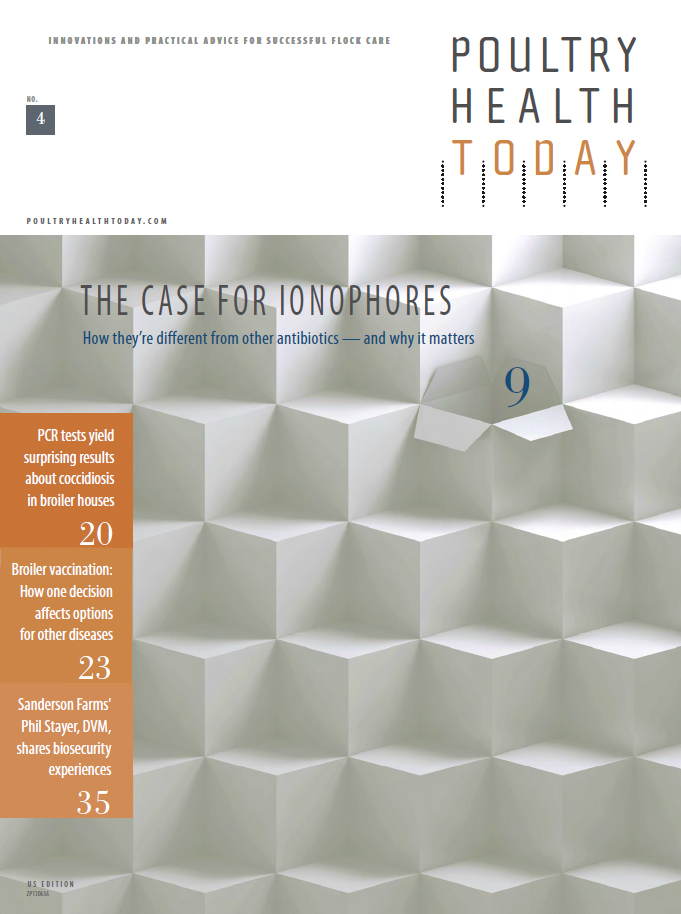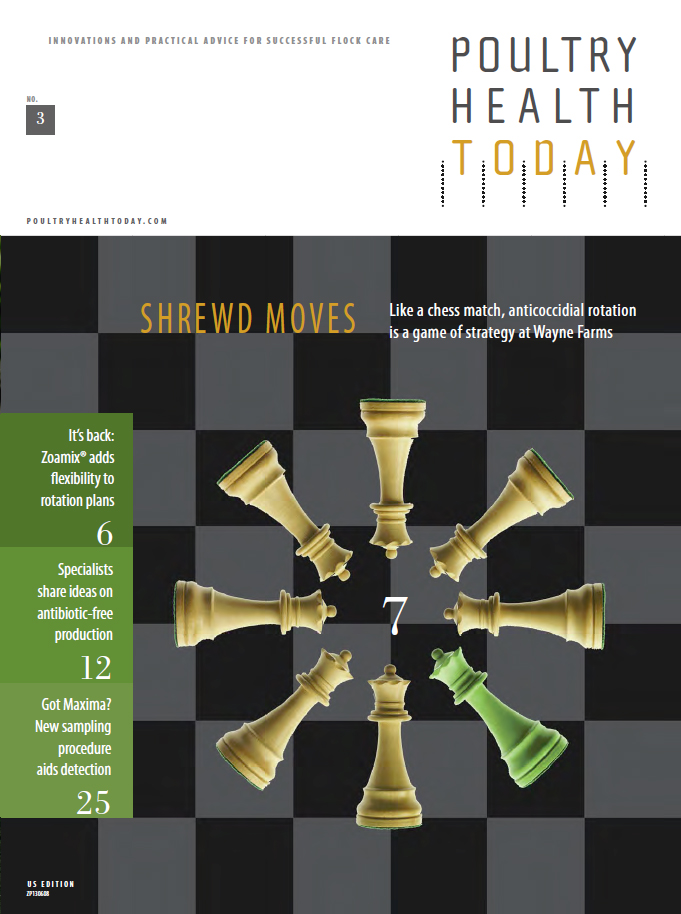

Researchers evaluate significance of IBV shedding

Shedding of infectious bronchitis virus (IBV) into the environment by infected birds isn’t a significant problem if birds are well vaccinated against IBV, but it can be a problem for naïve birds, researchers from the University of Georgia said at the 2015 International Poultry Scientific Forum.1
The poultry industry routinely vaccinates broilers with multiple serotypes to try and generate cross-protection against different IBV serotypes. Previous work at the university has shown this approach can protect chickens from clinical signs and lesions associated with IBV infection, but that chickens still shed virus into the environment.
For this study, researchers wanted to determine whether shedding after challenge with a heterologous (dissimilar) IBV is a problem for birds without proper immunity.
They took 40 day-old broilers at industry stocking density in a colony room and vaccinated half of them by eyedrop with IBV Ma5, a Massachusetts IBV serotype, and a Delaware 072 IBV. The rest were left unvaccinated and served as contacts in the room for vaccine transmission. Another group of 20 day-old broilers was housed in isolators and served as unvaccinated controls.
At 35 days of age, investigators challenged the directly vaccinated broilers with pathogenic Arkansas serotype IBV. The unvaccinated controls that had been separately housed were then added to the floor. Every 5 days after challenge, researchers evaluated all broilers for viral load and respiratory signs; they also checked five birds from each group for lesions.
The directly vaccinated birds were protected from challenge at all time points. Unvaccinated and unchallenged contact birds were also protected from signs and lesions at all time points except at 10 days after challenge. The unvaccinated, unchallenged controls were protected at 5 and 20 days after challenge but not at 10 and 15 days after challenge. Viral loads were detected in all birds at different time points after challenge.
Based on this data, the researchers concluded that virus shed into the environment by infected birds isn’t significant if the population is well vaccinated, but it can cause signs and lesions in naïve birds.
1 Shepherd Eric, et al. transmission of heterologous iBV challenge after bivalent vaccination in broiler chickens. 2015 international Poultry Scientific Forum abstracts.
More Issues












